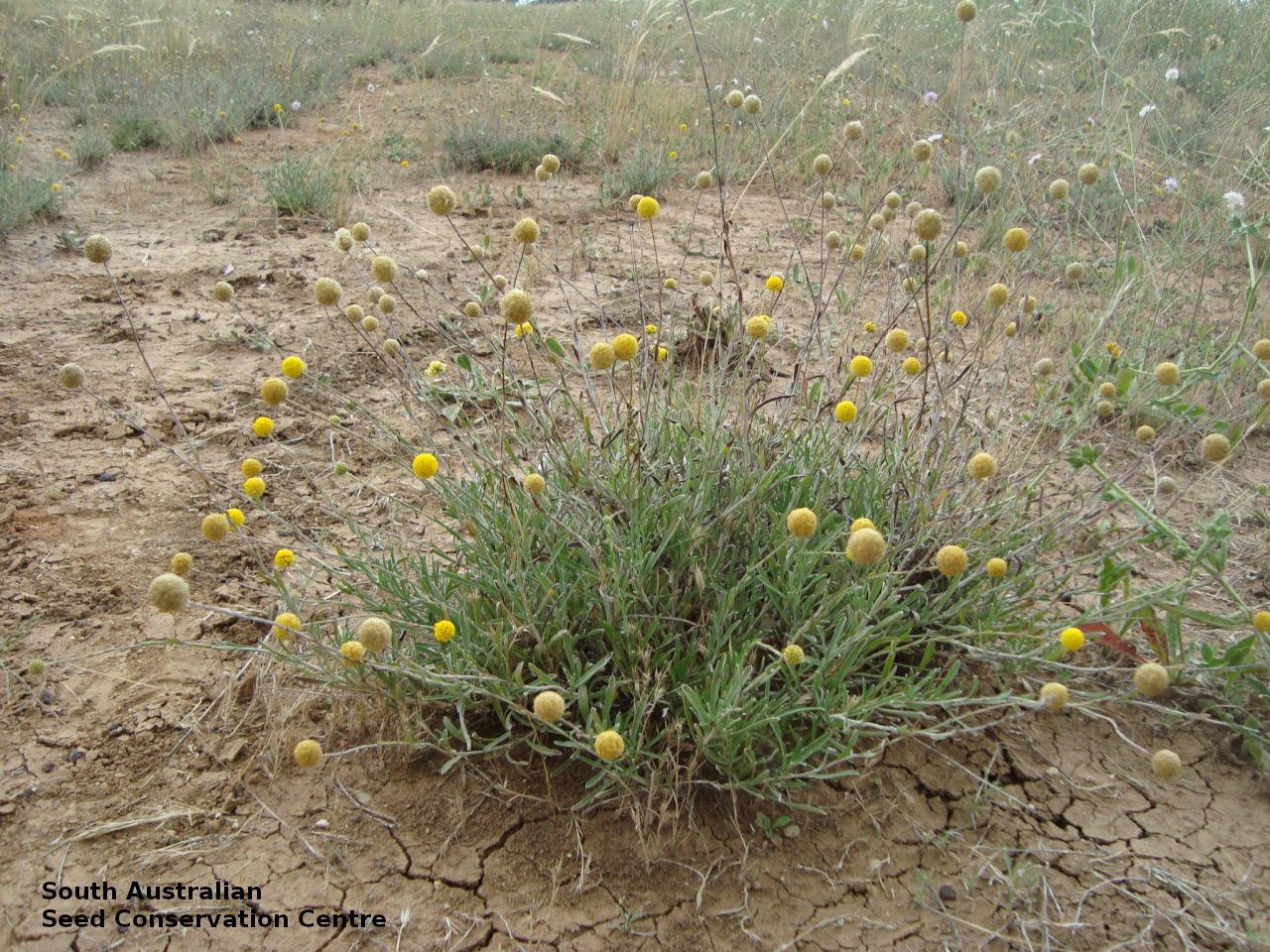
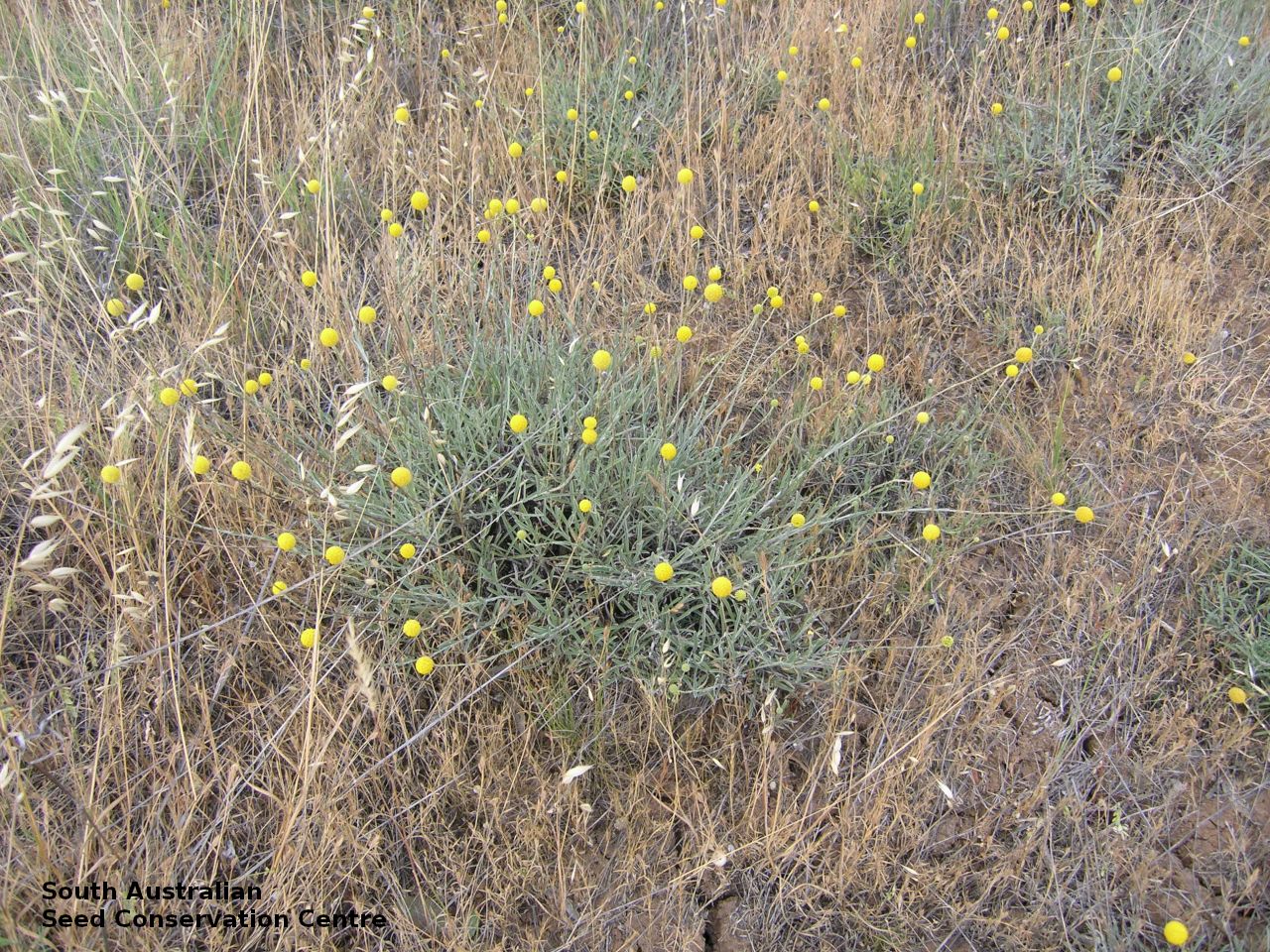
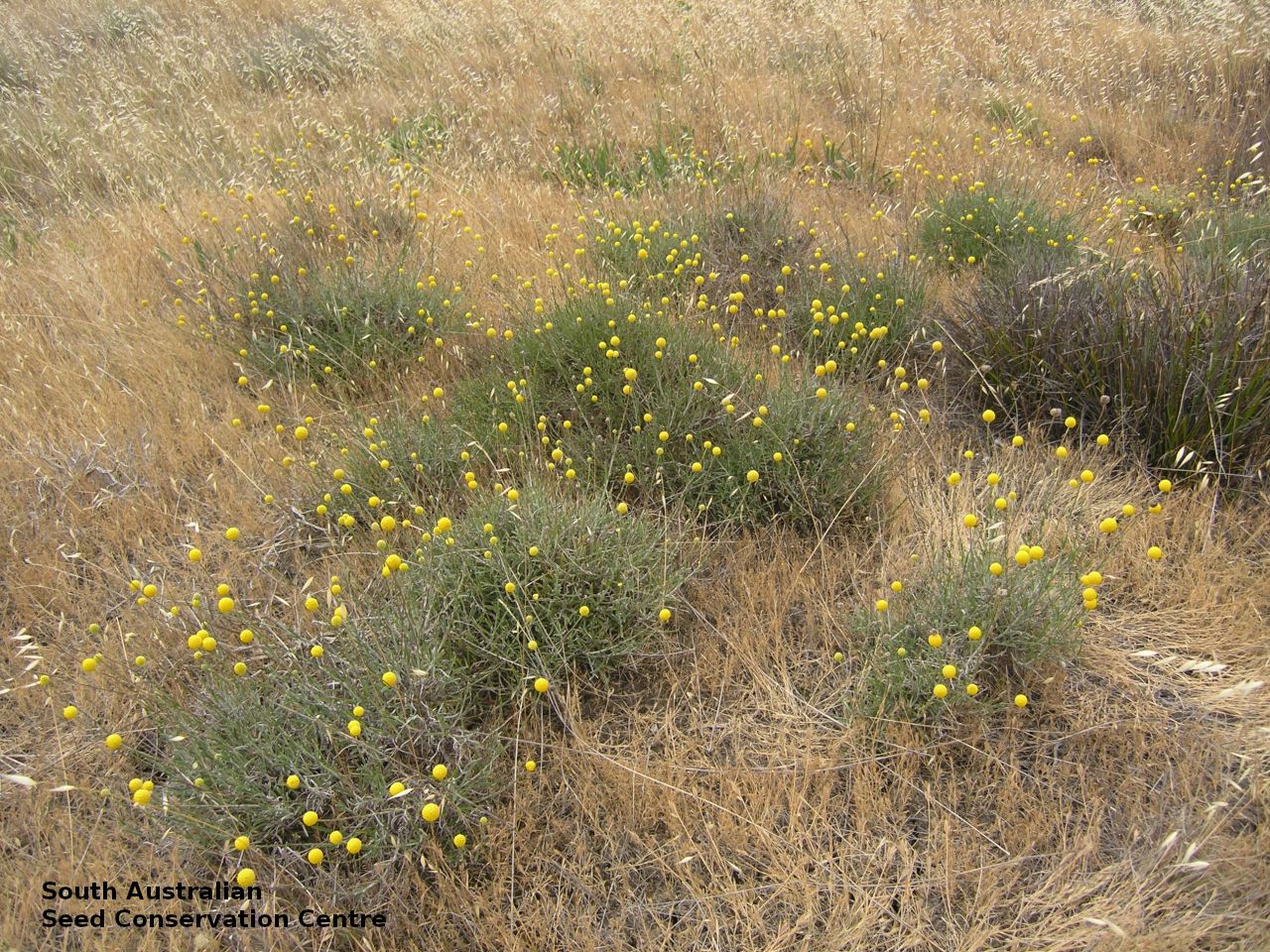
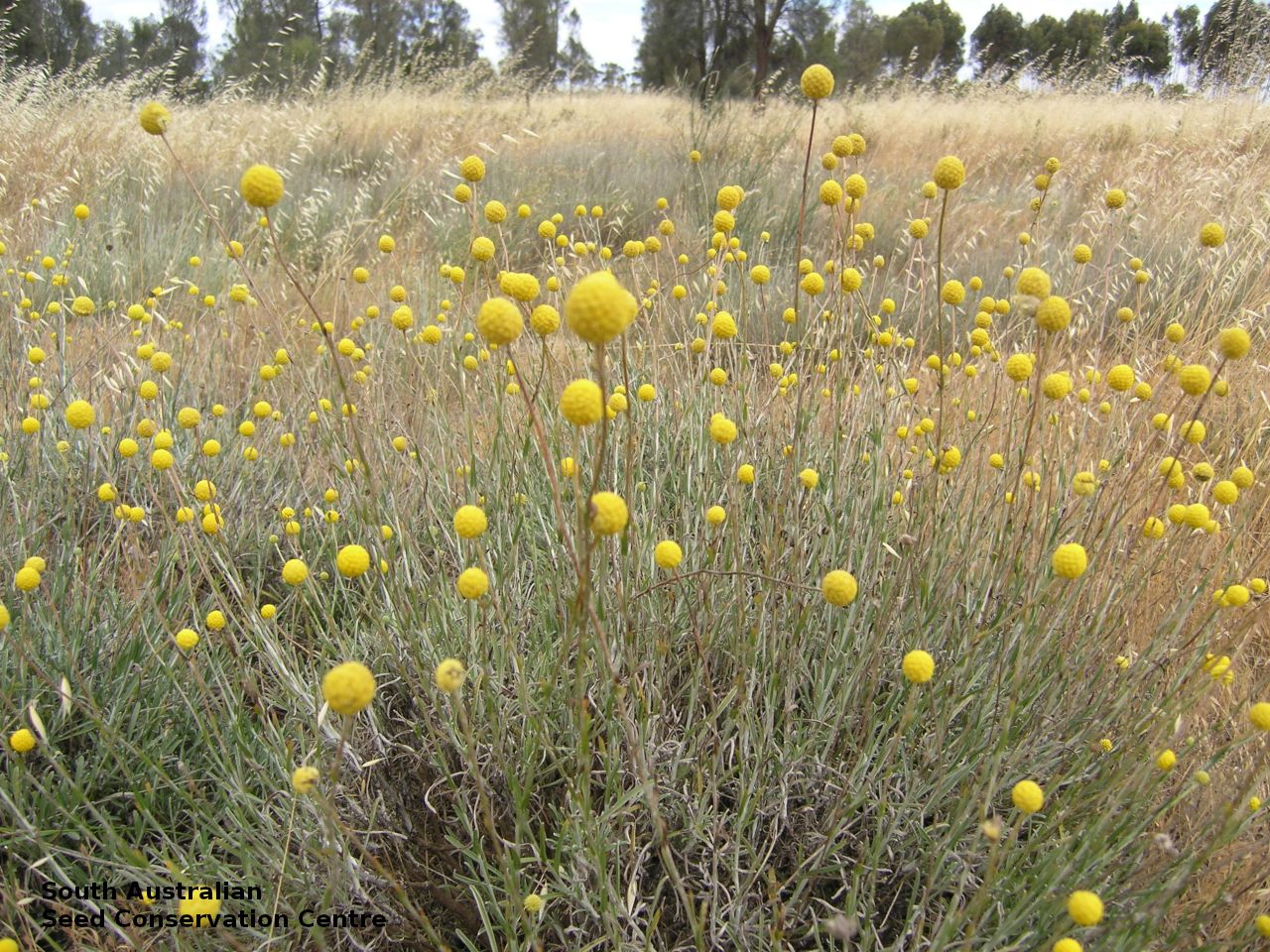
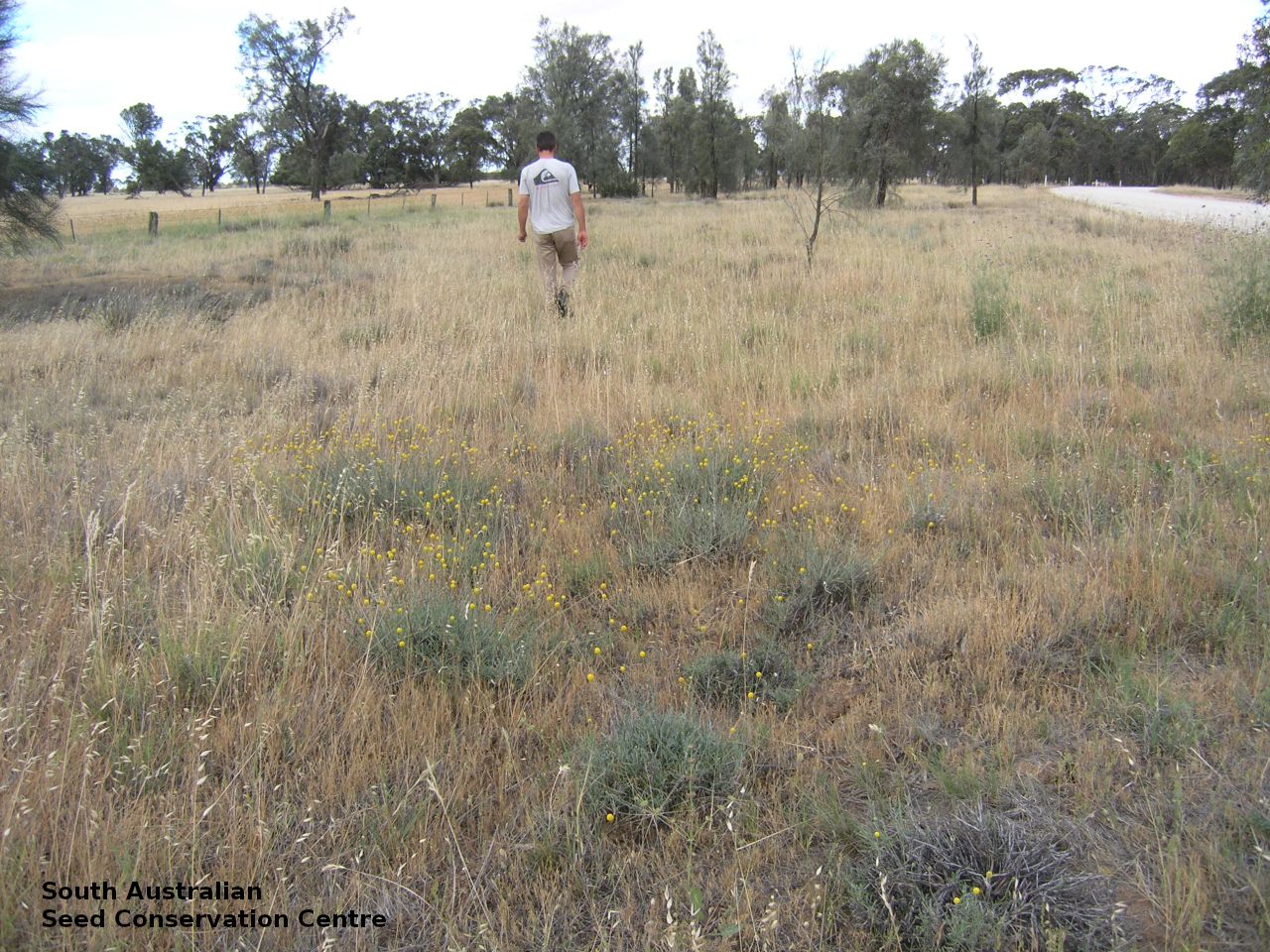
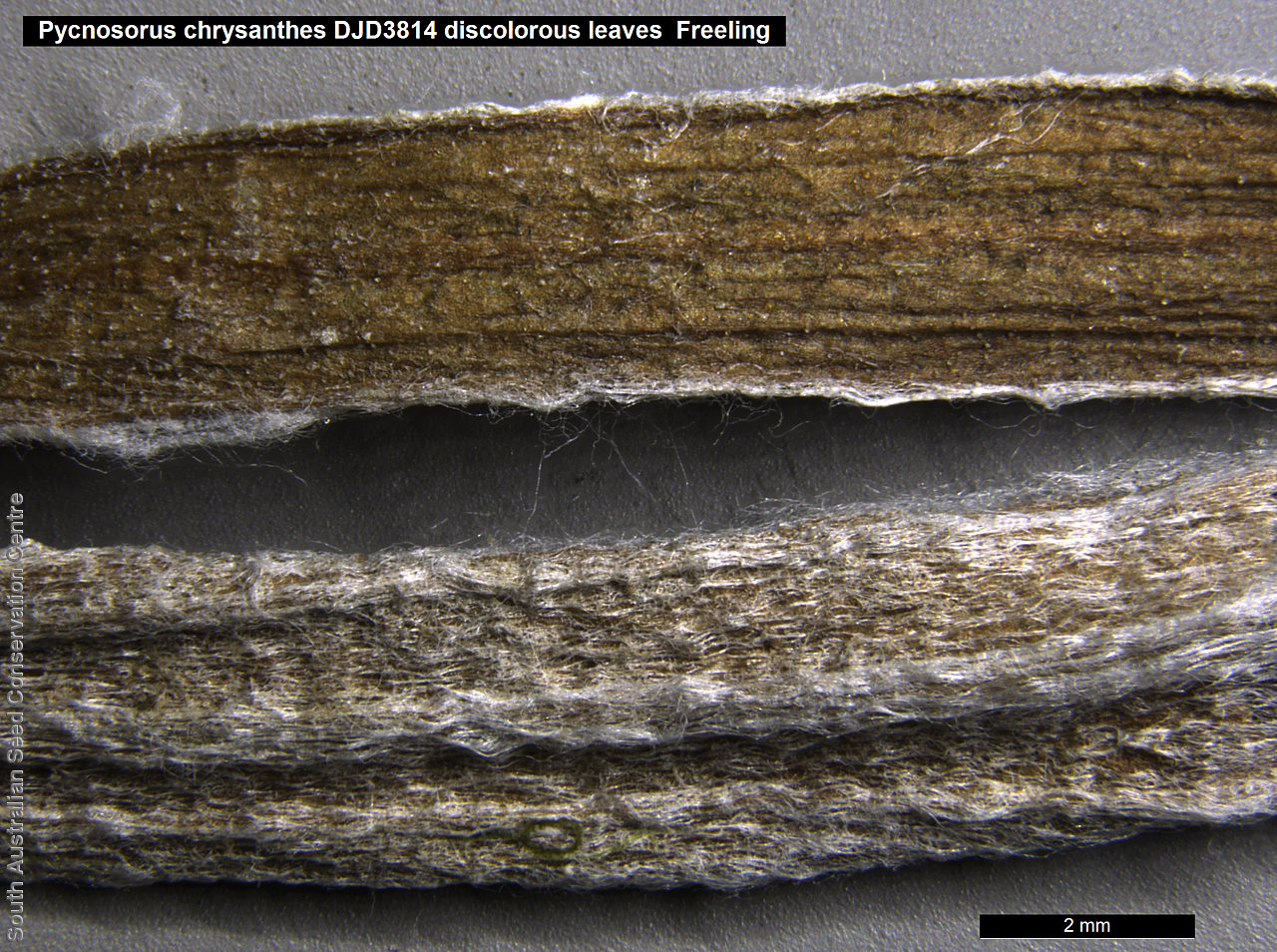
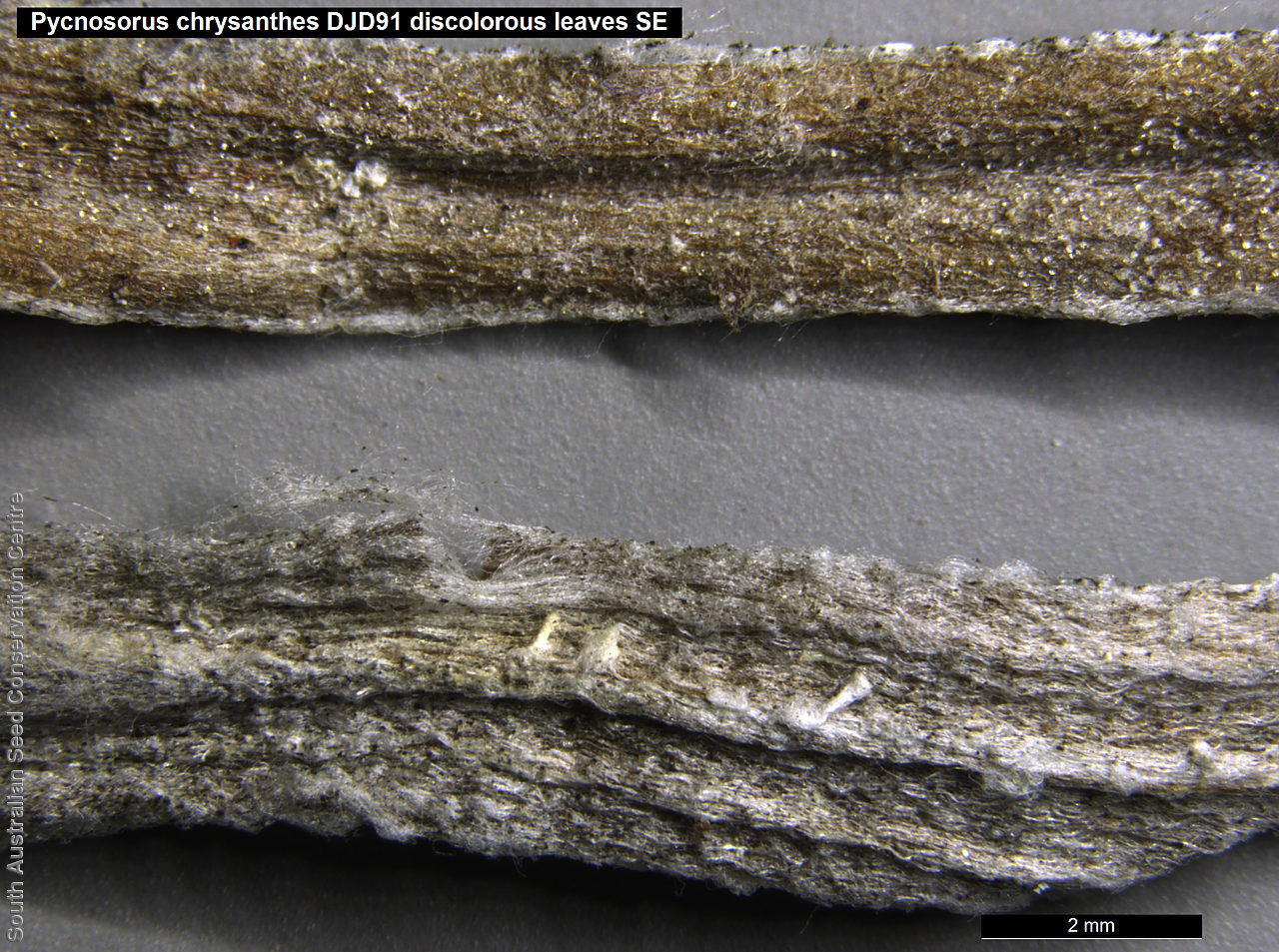
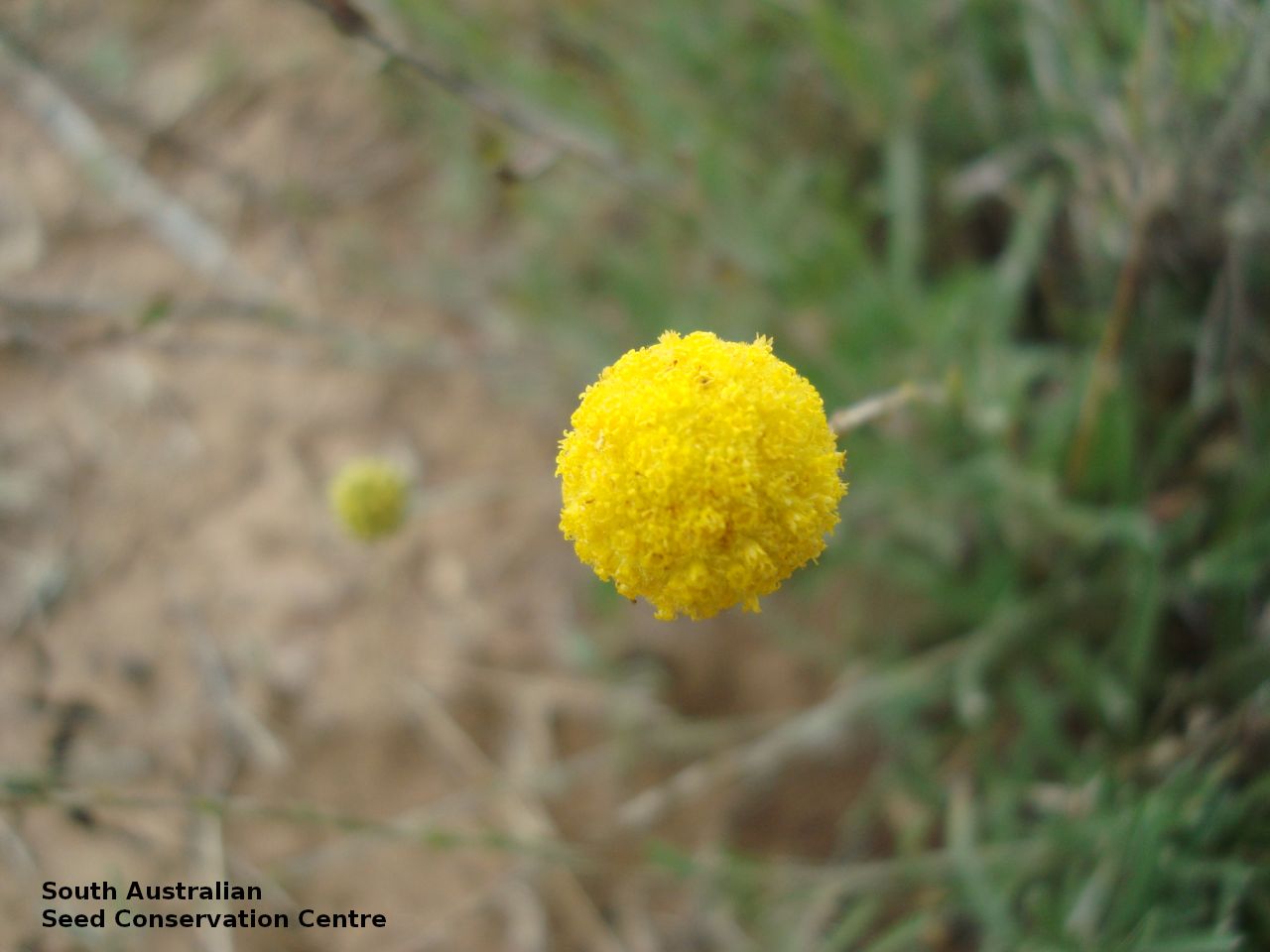
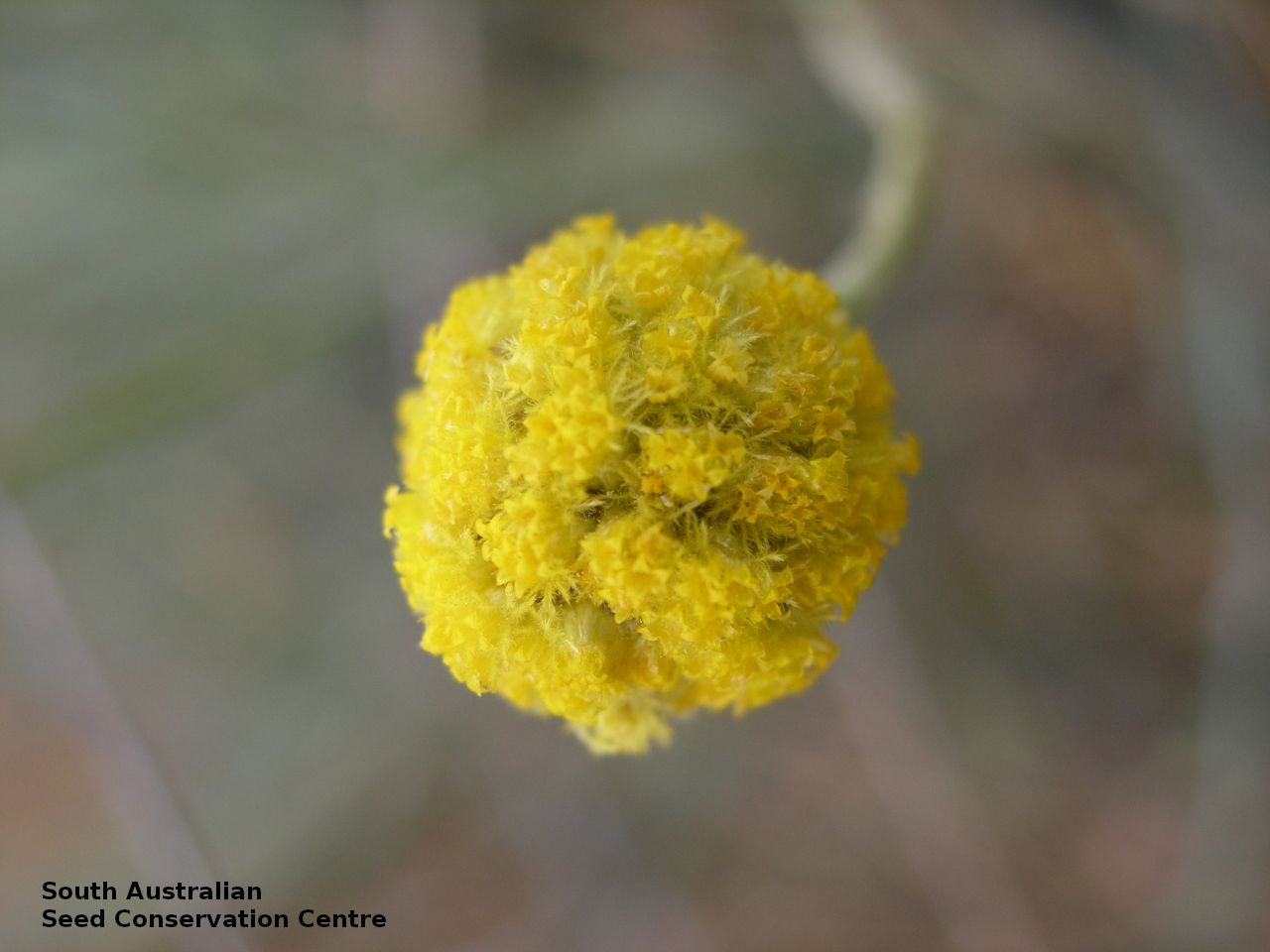
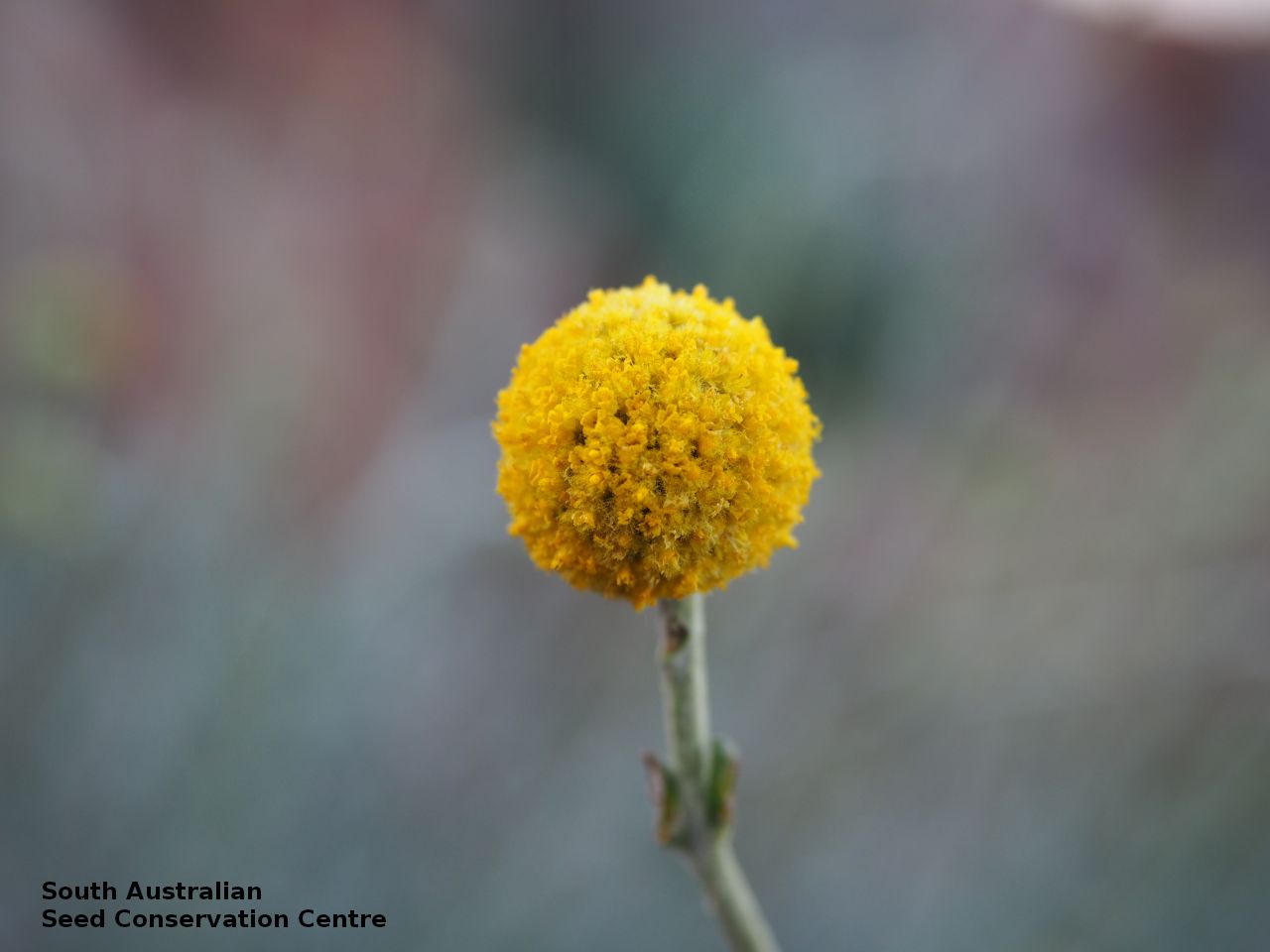
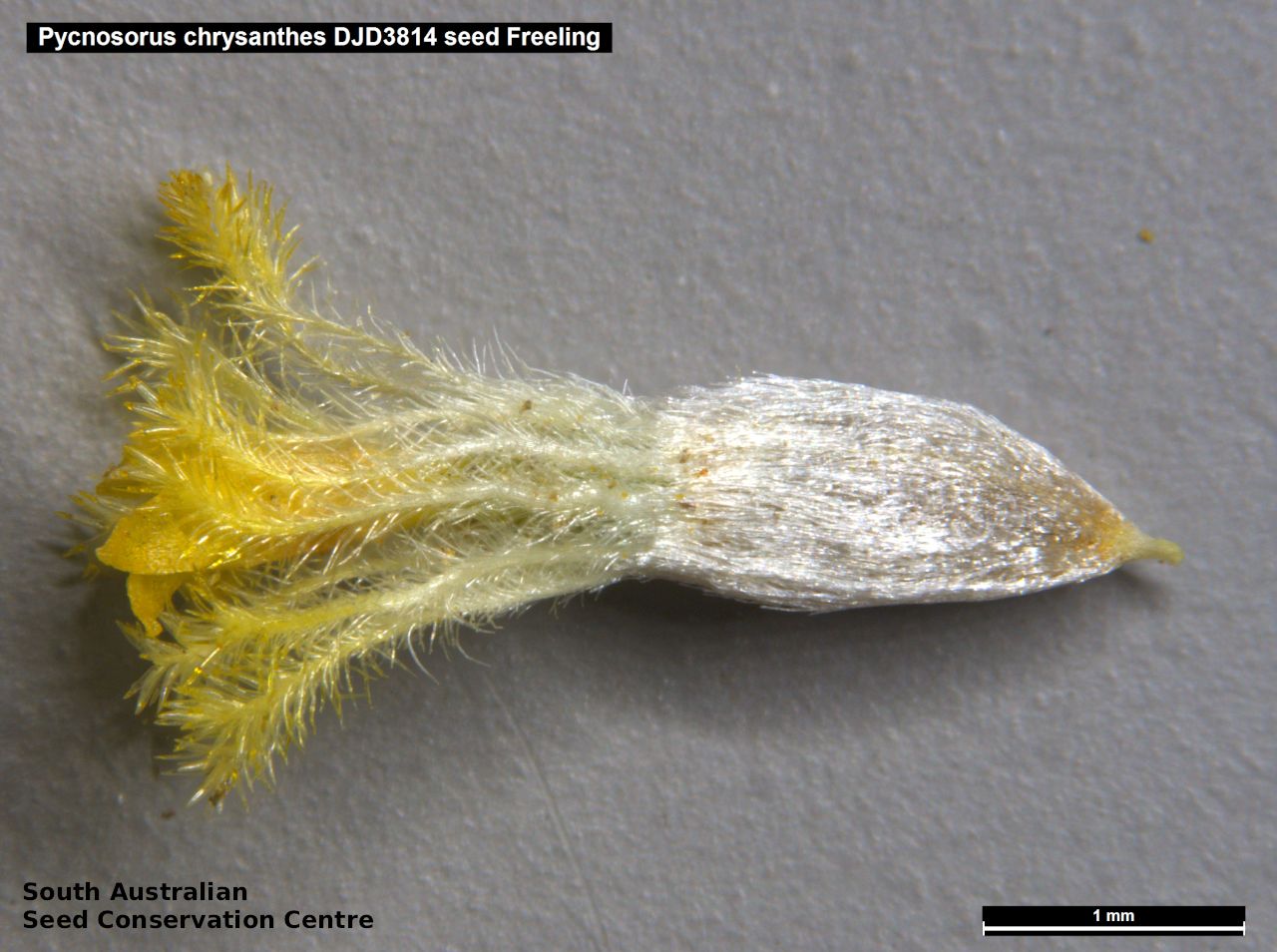
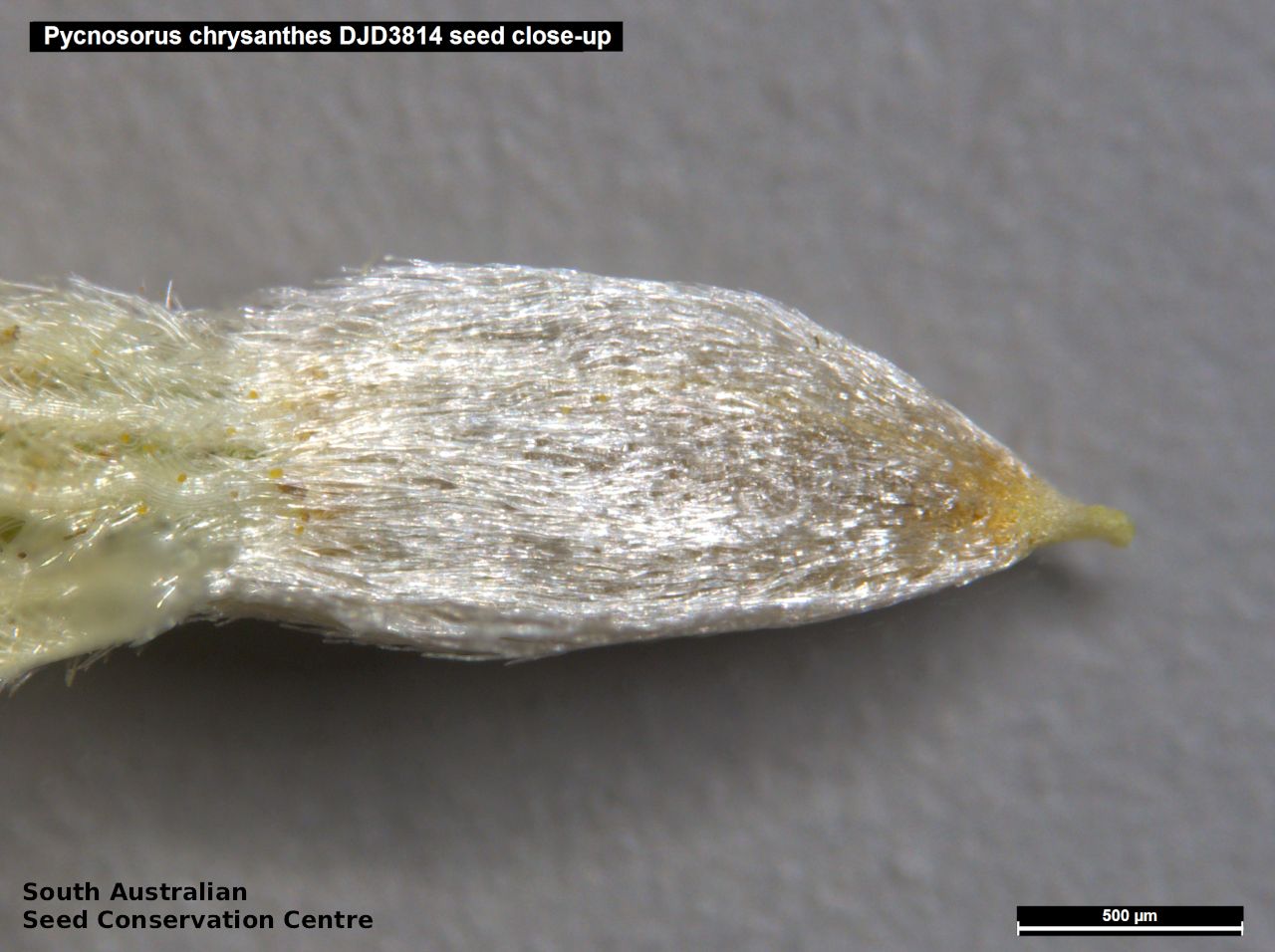
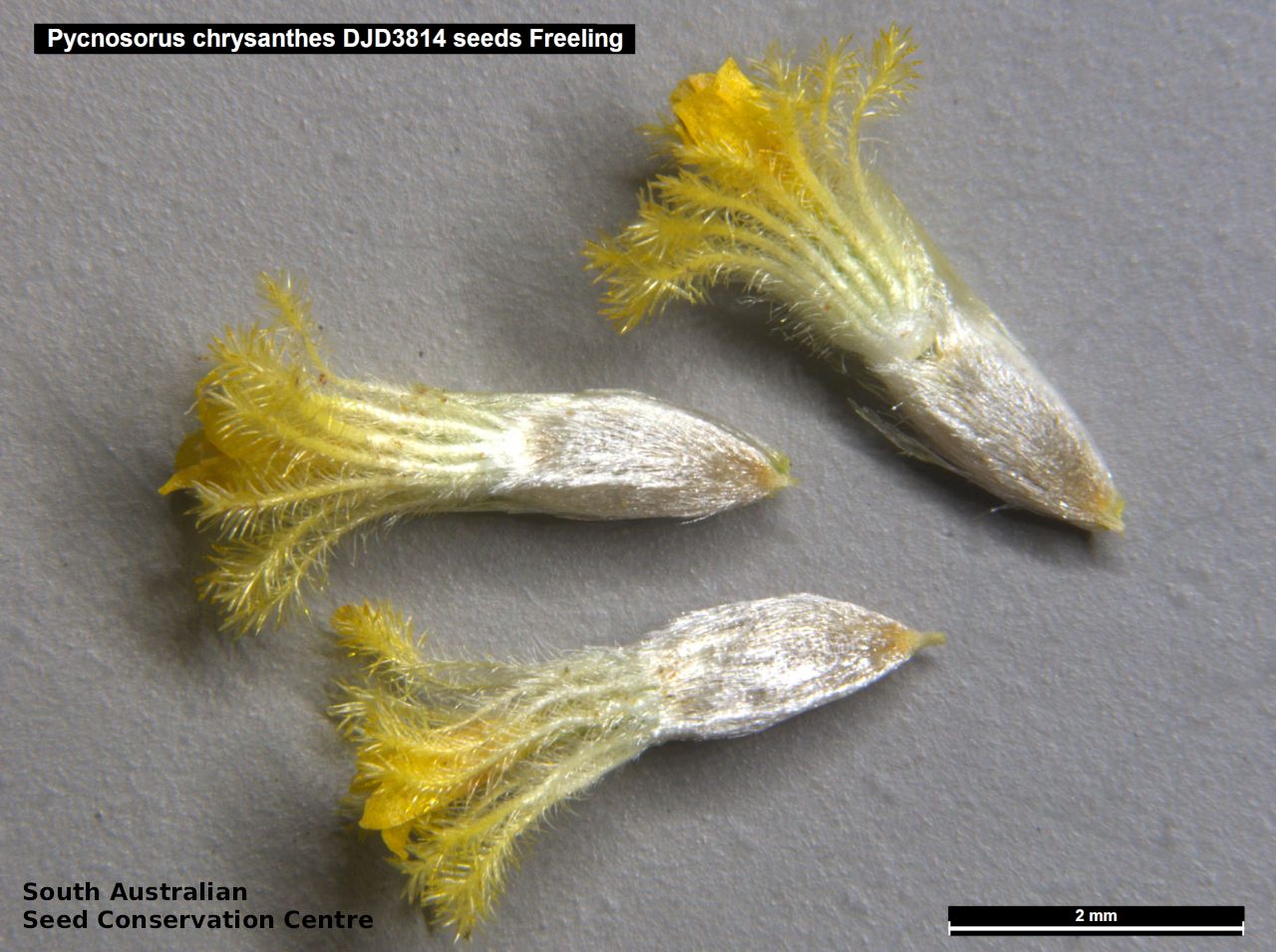
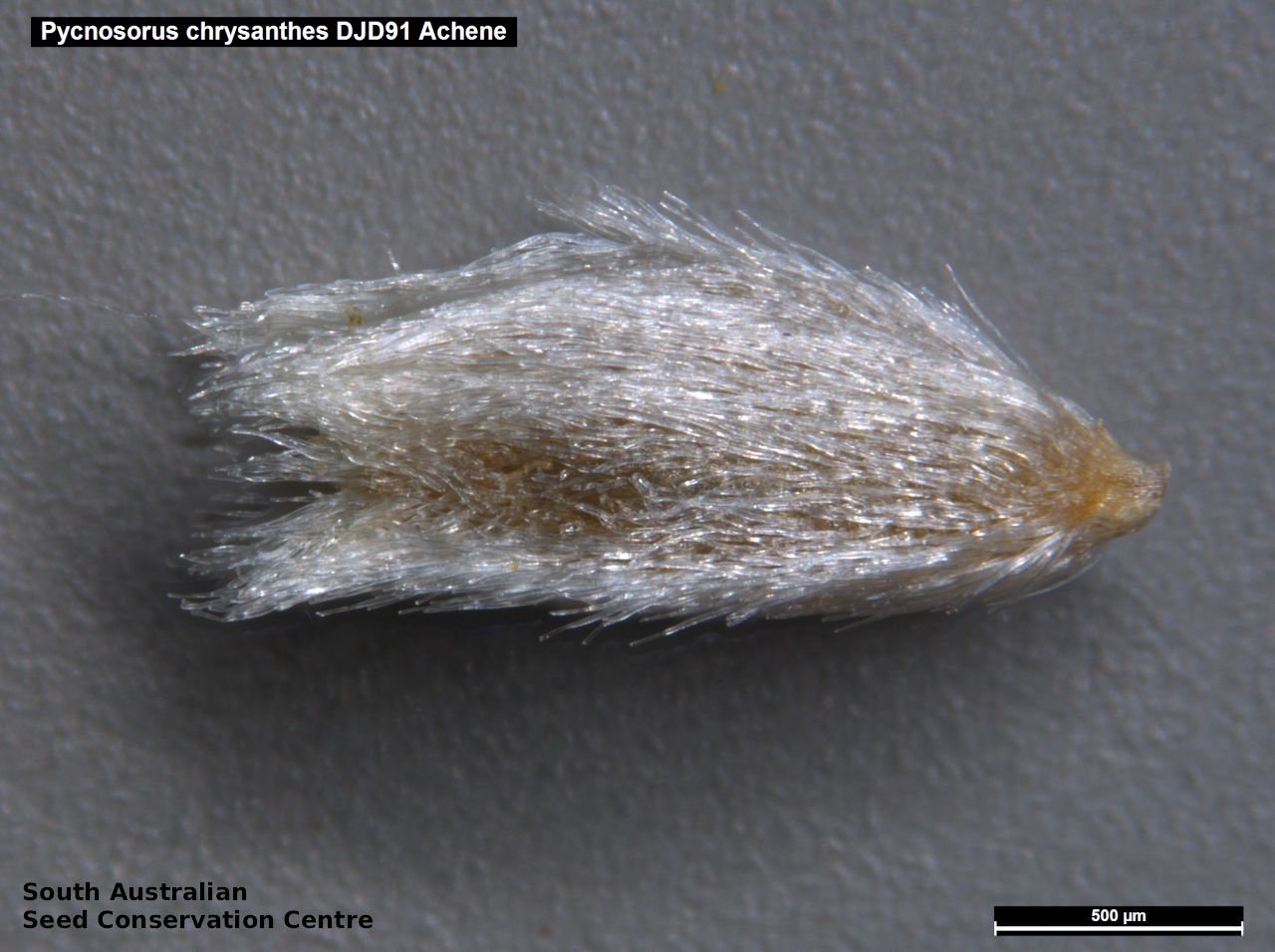
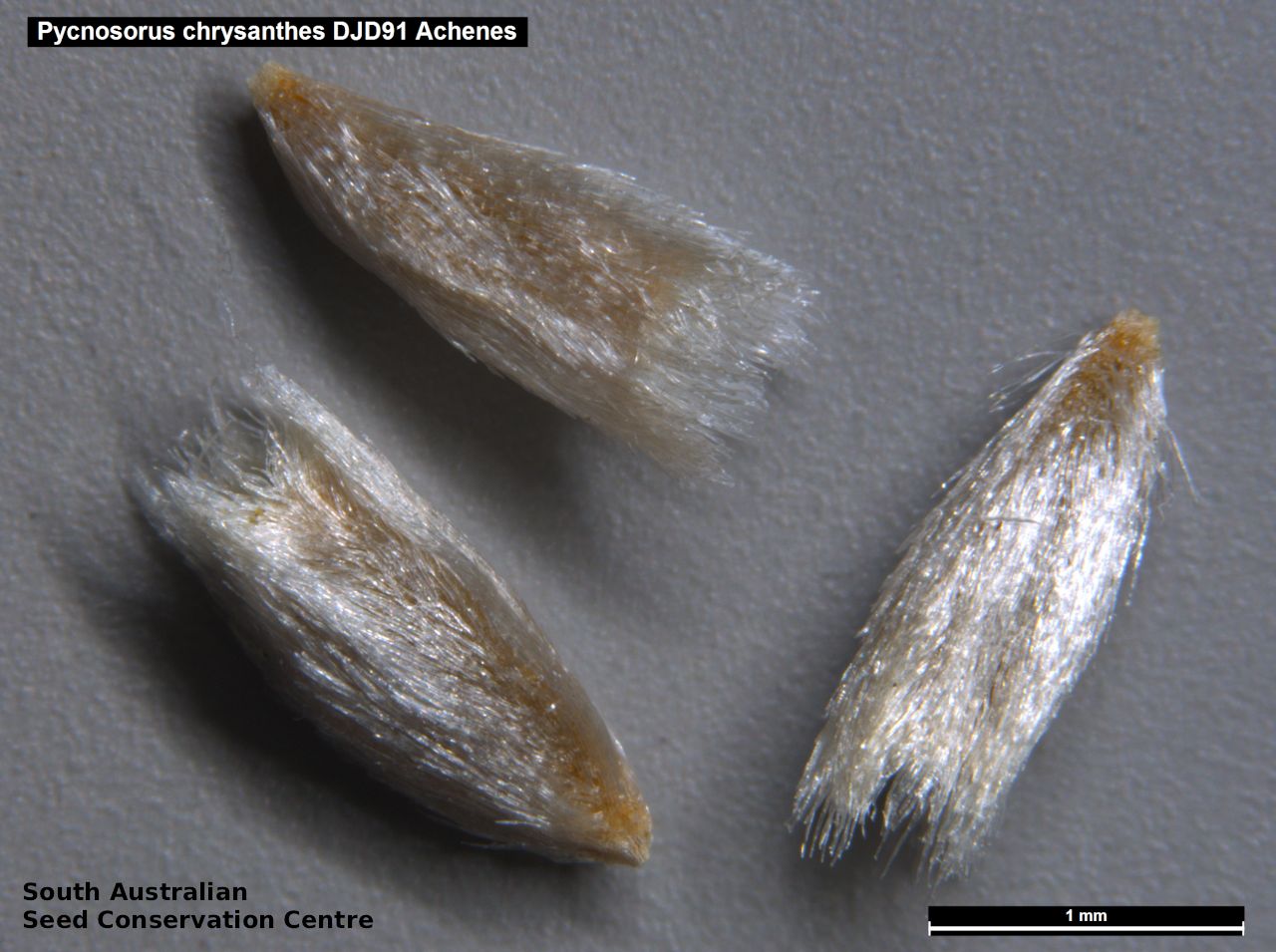
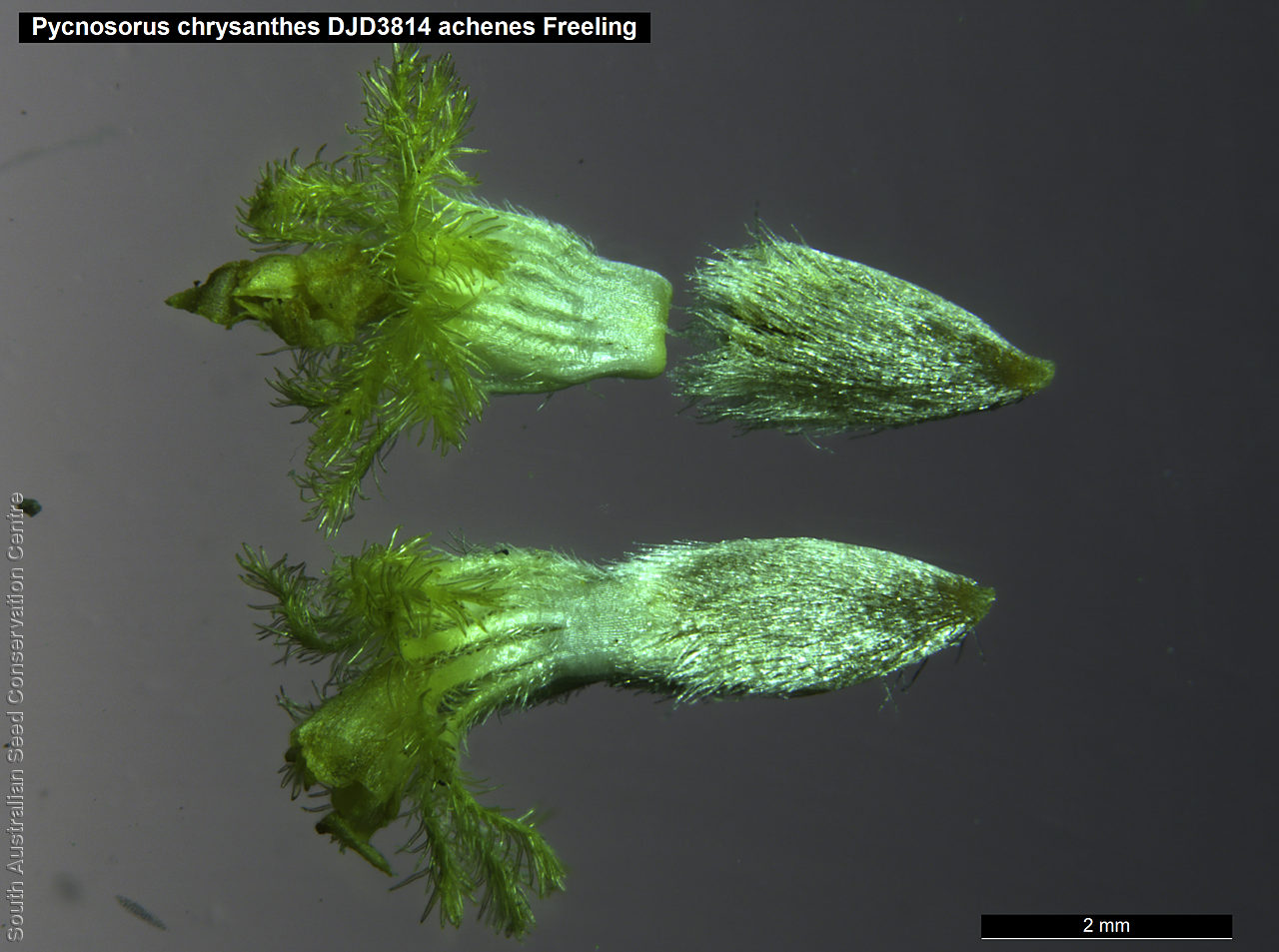
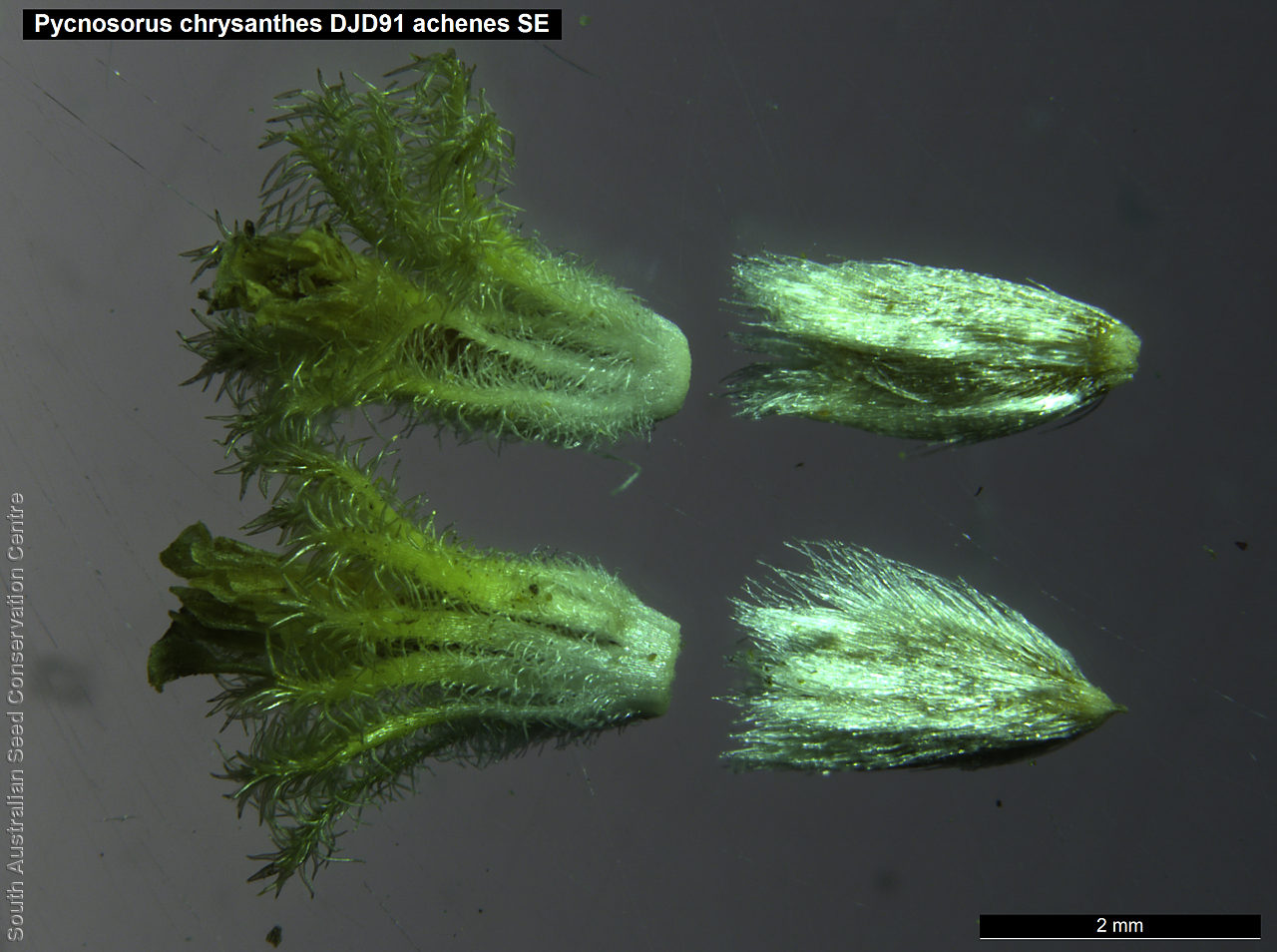


Botanical art
Prior names
Craspedia chrysantha
Calocephalus chrysanthes
Craspedia globosa, partly
Common names
Golden Billy-buttons
Yellow Drumsticks
Etymology
Pycnosorus from the Greek 'pyknos' meaning dense or thick and 'soros' meaning heap, referring to the dense flowering heads of the genus. Chrysanthes from the Greek 'chrysos' meaning golden and 'anthos' meaning flower.
Distribution and status
Found in the South-east in South Australia, growing moist areas in woodland, scrub and grassland on heavy soils. Also found in Queensland, New South Wales and Victoria. Native. Very rare in South Australia. Common in the other states.
Herbarium region: South Eastern
NRM region: South East
AVH map: SA distribution map (external link)
Plant description
Erect or ascending annual or short-lived herb with many unbranched, densely white woolly stems to 60 cm high. Leaves linear to linear-lanceolate to 10 cm long and 7 mm wide, acute, gland-tipped, upper surface olive-green to brown, glabrescent, lower surface often paler, white-woolly particularly on midrib and margins. Inflorescence a single ovoid or globose compound golden-yellow heads to 15 mm diameter. Flowering between September and December. Fruits are dense pale ovoid to globular heads with numerous seeds. Seeds are brown ovoid seed to 1.5 mm long and 0.8 mm wide, covered in long white hairs. Seed embryo type is spatulate fully developed.
Seed collection and propagation
Collect seeds between November and February. Collect heads that are drying off, fluffy and turning yellow-white with hard brown seeds. Pick off whole heads or pluck off mature seeds with your fingers. Place the heads in a tray and leave to dry for one to two weeks. Then rub the heads gently by hand to dislodge the seeds. Use a sieve to separate the unwanted material. Store the seeds with a desiccant such as dried silica beads or dry rice, in an air tight container in a cool and dry place. From four collections, the seed viability were low to high, ranging from 45% to 100%. This may reflect the level of seed cleaning undertaken. Seeds are non-dormant, viable seed should germinate readily.
| Location | No. of seeds (weight grams) | Number of plants | Date collected | Collection number Collection location | Date stored | % Viability | Storage temperature |
|---|---|---|---|---|---|---|---|
| Cassie Hlava | |||||||
| Cassie Hlava | |||||||
| Cassie Hlava | |||||||
| BGA | 8,100 (5.69 g) | 13-Feb-2006 | DJD485 South Eastern | 14-Sep-2006 | 45% | +5°C, -18°C | |
| BGA | 41,000 (12.71 g) | 100+ | 19-Dec-2007 | KHB101 South Eastern | 19-Sep-2008 | 100% | +5°C, -18°C |
| BGA | 12,500 (7.8 g) | 60+ | 19-Dec-2007 | KHB100 South Eastern | 19-Sep-2008 | 90% | +5°C, -18°C |
| BGA MSB | 49,000 (92 g) 49,000 (92 g) | 197 | 18-Jan-2005 | DJD91 South Eastern | 15-Feb-2011 | 95% | +5°C, -18°C |
| BGA | 3,900 (1.270 g) | 10 | 1-Dec-2020 | Andrian Shackley Northern Lofty | 28-Jun-2021 | 95% | -18°C |
| BGA | 2,500 (0.72 g) | 12+ | 14-Nov-2018 | DJD3814 Northern Lofty | 28-Jun-2021 | 100% | -18°C |
| BGA | 4,400 (1.750 g) | 40+ | 6-May-2021 | TST1471 Northern Lofty | 7-Jul-2022 | 100% | -18°C |
| BGA | 99,800 (40.631 g) | 50 | 29-Dec-2021 | TST1471 Northern Lofty | 20-Jun-2023 | 90% | -18°C, -80°C |
| BGA | 83,000 (35.230 g) | 50 | 18-Jan-2023 | TST1471 Northern Lofty | 20-Jun-2023 | 100% | -18°C, -80°C |
Number of plants: This is the number of plants from which the seeds were collected.
Collection location: The Herbarium of South Australia's region name.
% Viability: Percentage of filled healthy seeds determined by a cut test or x-ray.